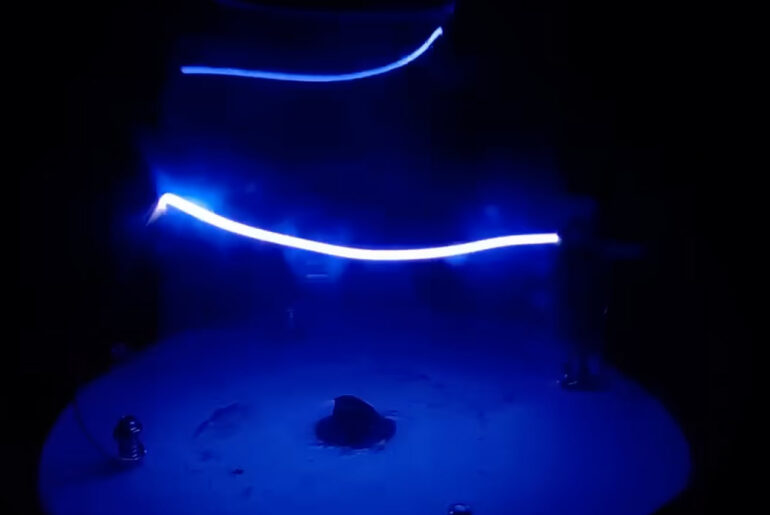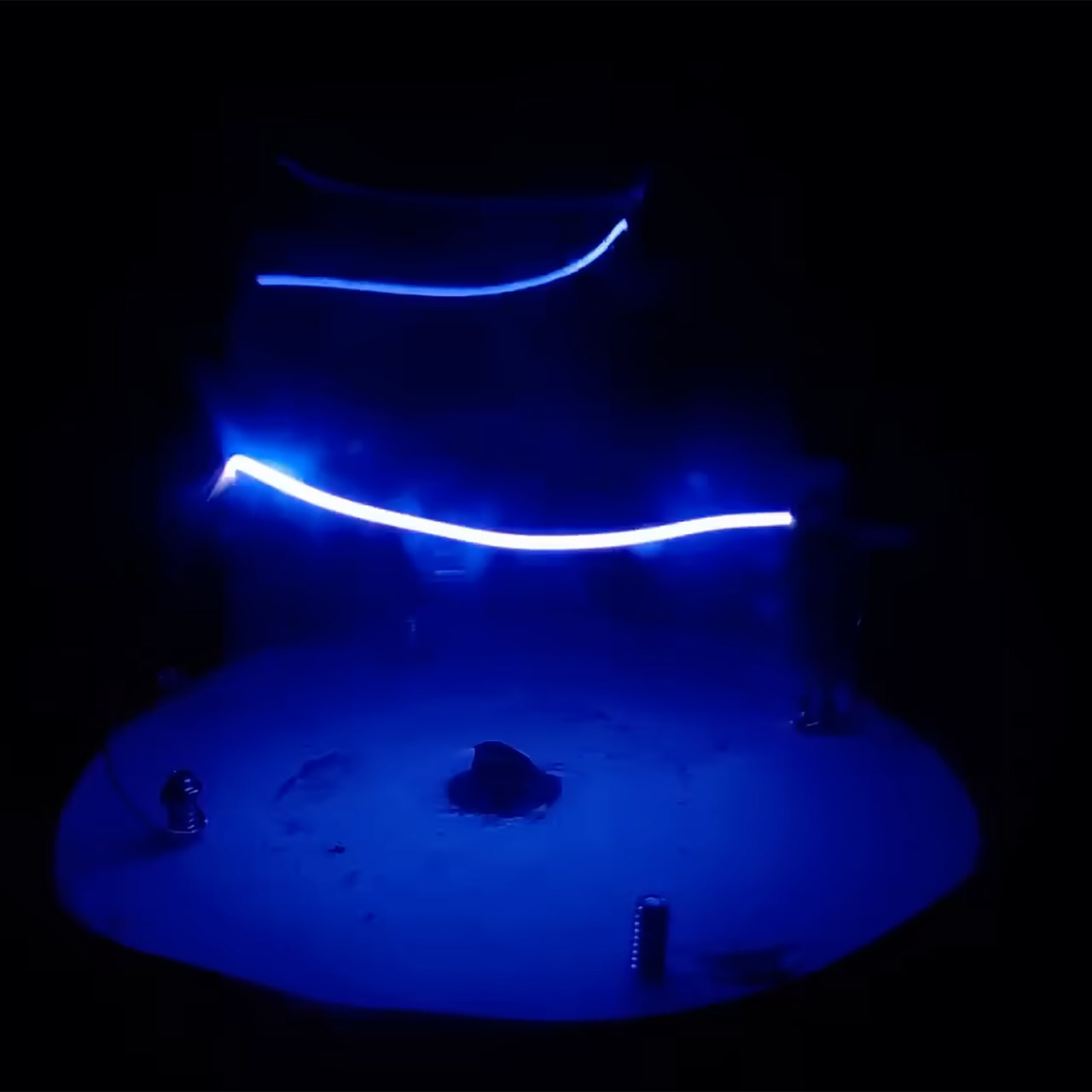
A modder named Hyperspace Pirate has taken us back to basics with a creation that’s equal parts mad science and practical brilliance. Using a 3D-printed hand-cranked generator, he managed to conjure plasma—yes, the glowing, electrified state of matter—right in a vacuum chamber.
Hyperspace Pirate’s generator starts with a deceptively simple setup: a 3D-printed frame housing eight copper coils and a pair of beefy 40×20 N52 neodymium magnets. These aren’t your fridge-magnet variety—these are powerful enough to make you rethink your relationship with metal objects nearby. When the crank is turned, a 4.5:1 gear ratio kicks the rotor into high gear, spinning the magnets past the coils at over 1,000 RPM with surprisingly little effort. The absence of iron cores in the coils is a deliberate choice. Strong magnets paired with iron would cause “cogging,” making the crank nearly impossible to turn by hand.
- LEONARDO DA VINCI BUILDING SET – Immerse yourself in the history of flying innovation with the LEGO Icons Leonardo da Vinci’s Flying Machine...
- DIY CRAFT – This set includes all the pieces you need to craft a detailed LEGO interpretation of da Vinci’s visionary ornithopter, a Leonardo da...
- INNOVATIVE FEATURES – Recreate Leonardo da Vinci’s flying machine with its flappable textile wings and tail, driven by an intricate invention of...
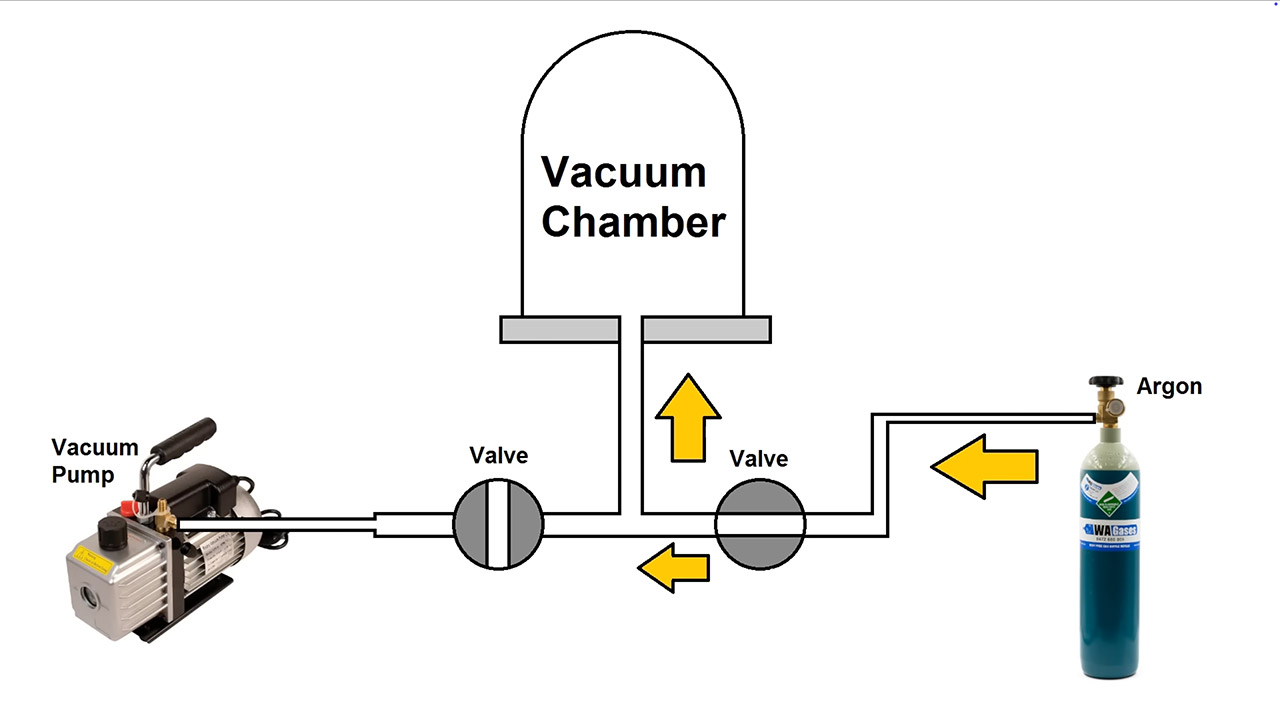
Those spinning magnets induce a current in the copper coils—14,700 turns of ultra-fine 38 AWG wire, to be exact. This setup generates over a kilovolt of electricity, a figure that’s impressive for something you’d crank like a vintage radio. That high voltage feeds into a voltage multiplier, a circuit that amplifies the juice even further, and then it’s sent to electrodes inside a vacuum chamber. The result? A mesmerizing arc of plasma ensues.
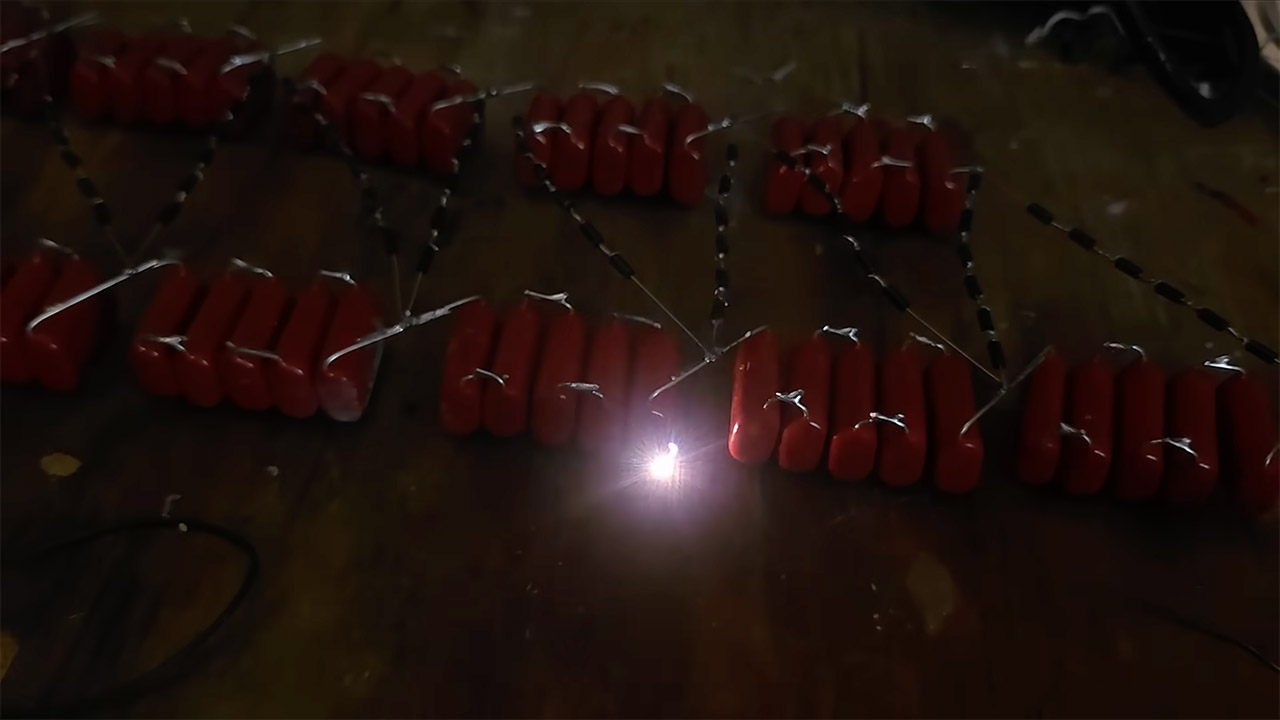
This creation draws a direct line to the arc lighters that have become popular in recent years. Think of this as their bigger, badder, hand-cranked cousin. In a vacuum chamber, the low-pressure environment makes it easier to ionize gas and create plasma, but even outside the chamber, this generator could spark an arc strong enough to ignite tinder or power a neon sign.
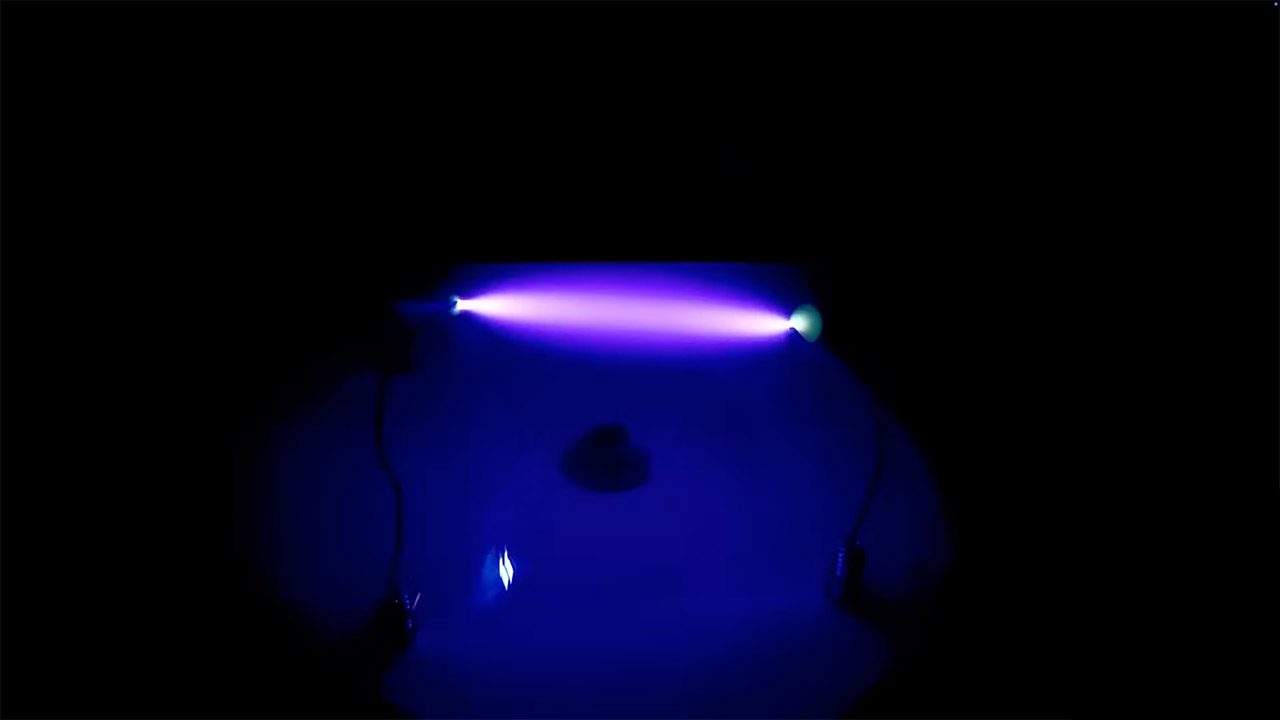
The vacuum chamber contains the plasma, reducing the risk of accidental shocks, but scaling this up or using it outside controlled conditions could invite danger. Hyperspace Pirate’s design, while innovative, isn’t a toy—it’s a proof-of-concept that screams for careful handling.
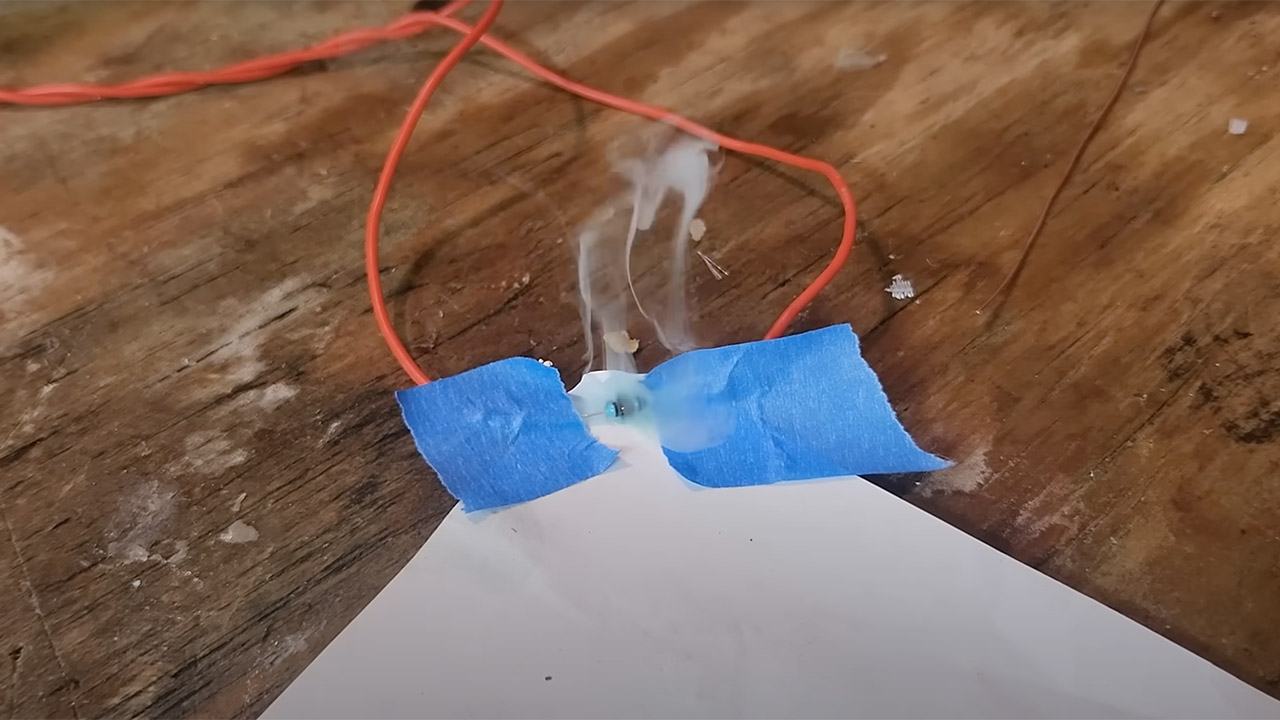
It harkens back to the early days of electrical experimentation, when pioneers like Tesla and Faraday pushed boundaries with little more than wire, magnets, and a relentless drive to understand. Hyperspace Pirate’s invention channels that same spirit, proving that you don’t need a lab or a PhD to make something extraordinary.
For those itching to build their own, the project offers a blueprint but leaves room for iteration. Swap in a flyback transformer from an old CRT monitor, and you could simplify the high-voltage setup. Add a more robust gear system, and maybe you could push the RPMs even higher.
[Source]

